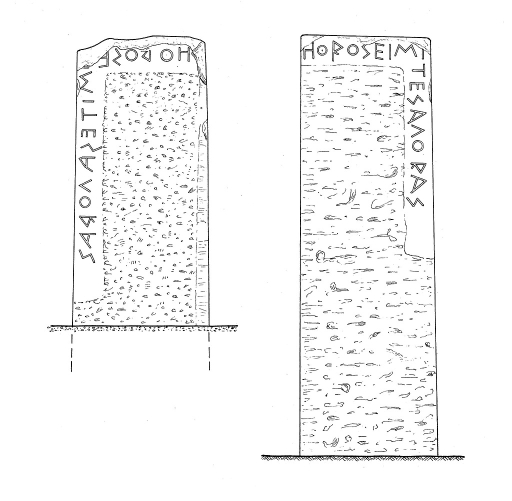7 The direction of Greek writing
Session 3 introduced two features of ancient Greek writing that differ from later practice: the exclusive use of capitals and the absence of spaces. Another difference is the direction of the writing, which was initially quite flexible. The Phoenician script on which Greek was based was written from right to left. Many languages follow the same direction today, including Hebrew, a close relative of Phoenician. In the earliest examples of Greek writing, right-to-left and left-to-right are both found, sometimes within the same piece of writing. It was during the fifth century BCE that the direction of left-to-right began to dominate.
These two boundary stones from Athens contain the same text written in different directions. The text on the left-hand stone begins at the top right and runs from right to left, then top to bottom. The words on the right-hand stone begin at the top left, run from left to right, and continue from top to bottom. You will return to the meaning of the stones in Session 7. For the moment, focus on the way the letters are written.
Activity 6 Reading the stones
Can you match any of the letters on the two stones?
Discussion
The inscriptions match letter for letter, although damage to the first stone makes comparison difficult along the top. Damage, whether deliberate or accidental, is a perennial problem in the field of Greek epigraphy (the study of Greek inscriptions). Missing letters can sometimes be restored with reasonable certainty. In this instance the damage is minor and surviving boundary stones can be used as guides. But severely damaged texts are usually beyond recovery.

